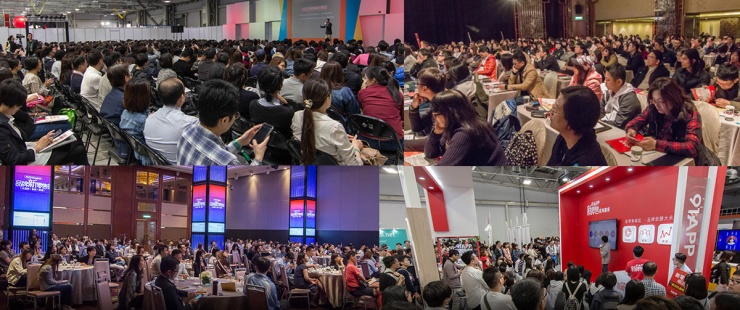末日來臨?工商大老為何接連唱衰電商?
「電子商務平台可能成為歷史。」鴻海董事長郭台銘日前接受節目訪談,拋出這句震撼彈。
郭董不是第一個唱衰電商的人,早在2017年,阿里巴巴創辦人馬雲就預言:電商很快會被淘汰。我的天啊,電子商務,這個成長飛快、號稱21世紀最性感的產業,真的要走入歷史了嗎?
往下解讀郭董和馬雲的話,兩位大老其實對於電商的未來,擁有相同想像,就是朝向「新零售」發展。他們口中的「新零售」,終極目標是零售業、製造業、甚至物流業「虛實合一」,一切以消費者為中心,上游製造業掌握數據資訊,生產客製化、個性化的商品給消費者;中下游零售業結合全通路銷售與會員經營,360度包圍消費者。
言下之意,電商沒有走入歷史,它與實體融合,進化成為「新零售」。真正走入歷史的,是線上與線下一分為二,電商人只做電商事的舊思維。
面對來勢洶洶的新零售時代,店家如何因應?
然而新零售終究是個大命題,台灣超過九成是中小企業,什麼新物流、新製造,根本在打高射炮,實在太遙遠,趨勢見到是見到了,下一步怎麼做?
對所有零售品牌而言,具體作法是:盡快做到「網路+門市」虛實融合,完成全通路布局。
想像一下,若品牌擁有自己的官網、APP、與門市,而且系統能夠互相串接,會員資料、消費數據可以互相流通,等於完全掌握了顧客的消費行為,除了大幅提升顧客的消費滿意度,你也更清楚會員樣貌,這時再透過系統分析,制定行銷活動,如此不斷測試、檢視成效、持續優化,就能創造亮眼營收。
這種操作不難懂,多數人聽完也深表認同,但為什麼放眼台灣商家,真正做到「虛實融合」的比例還是不高?因為老闆內心有個深沉的恐懼:「說起來很好聽,做起來…恐怕不容易」。
這樣的顧慮,很普遍、可以理解,卻也硬生生阻斷品牌發展的可能性。
數據會說話!啟動「虛實融合」,業績成長超乎想像!
91APP在做的,就是提供一套解決方案,協助店家將「虛實融合」這件事的成本降到最低、成效提到最高。使用91APP開店系統,最快6週就能打造自己的購物官網與品牌APP,若你擁有實體門市,裝設於門市的應用工具「門市小幫手」也能同步到位,打通虛實。
一旦你將「虛實」打通,所有的會員資料、消費紀錄、網站與APP 上的動作、實體店的行為都能數據化,讓品牌精準掌握會員,最終培養出穩定而長久的「顧客關係」。我們的合作品牌《Norns》,以販售日系禮品小物起家,透過虛實融合,整合線上線下會員,成功養出大量粉絲,這些「Norns粉」平均一年在Norns消費10次以上,單靠這些鐵粉火力支援,Norns每月營收就不斷攀升。
91APP已有許多合作品牌和《Norns》一樣,透過「虛實融合」讓營收達到跳躍式成長!他們有些是網路品牌跨足實體,例如人氣女鞋《amai》,在2016年啟動虛實融合,當年度業績翻漲10倍;有些則是實體品牌進軍電商,例如老字號女裝品牌《SO NICE》,二代接班人大刀闊斧進行「虛實融合」產業升級,成功讓集團營收翻倍。
數據會說話,「虛實融合」有很大的發展性,一旦啟動,帶來的業績成長超乎想像!
「電商+店商」未來五年,大有可為!
幾天前,經濟部公布統計數據, 2019年電子購物業上半年營業額再創新高,估計全年營收會突破2,000億大關!兩千億欸,這數字聽起來很嗨,但經濟部公布的數據還有一項:
「電子購物業占零售業比重也由 3.2% 增加至 5.1%。」
發現了嗎?台灣的線上零售確實成長強勁,但線下零售的占比仍超過九成;換言之,絕大部分的消費場景,發生在線下。專心做電商,只吃到零售市場的5%;專心做店商,又會覺得市場被電商瓜分。最佳解法是「電商+店商」,打造虛實融合新零售!
台灣已有越來越多品牌注意到這件事,並著手規劃產業升級,未來3-5年,新零售會大幅改變市場規則,只有單一通路的品牌就算沒走入歷史,大概也剩半條命吧!
【免費了解 · 全台唯一】
網路、門市全通路虛實融合關鍵趨勢
